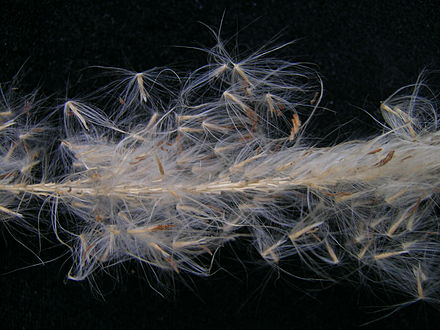We often think of fire as the ultimate destructive force but for pyrophile trees, fire is necessary to reproduce. Although several pyrophile plants – plants that have adapted to tolerate fire – exist worldwide, some species of trees have taken this relationship a step further. They have adapted to harness the power of fire to aid in seed release through a process known as serotiny.
Most tree species release their seeds during, or immediately following, the tree’s ripening stage. The seeds are dispersed via wind, water, or animals, and take root where they land. However, for some tree species, particularly conifers like pine, sequoia, cypress, and spruce, the release of seeds is delayed until a specific environmental trigger is present. Serotiny is the process in which a plant relies on an external trigger – be it fire, flood, increased rainfall, or death of a parent plant – to signal the release of seeds. In the case of pyrophile trees, that trigger is fire.
For conifers with serotiny tendencies, seed cones are tightly sealed with resin, making it impossible for the seeds to escape the cone, thus protecting them from foraging animals. In fact, most sealed cones remain on the tree, sometimes for several years, high in the canopy. Once a periodic forest fire sweeps through and the cones are exposed to temperatures ranging between 122 and 140 degrees Fahrenheit (or 50 to 60 degrees Celsius), the resin melts, allowing the cone’s scales to open and release the seeds.
Occasional forest fires, mostly caused by lightning, are a natural occurrence. Seritinous trees have evolved to use the heat and fire in their reproductive cycle. They have adapted to develop thick, fire-resistant bark that protects the tree trunk from fire while also directing the heat up into the canopy where it can melt the resin-sealed cones.
It is advantageous for a conifer to be serotinous. First, the seeds are safe and protected while sealed in their resin-coated cones high in the tree’s canopy. Once the seeds are released, they then to thrive on the nutrient-rich, burnt soil left behind by the forest fire. Second, the fire will have removed young plants, dead leaves, and brush on the forest floor so there is less competition for the newly-emerged pine seeds.
While the serotiny process seems to work out quite well, it is interesting to more that Mother Nature have built in her own contingency plan just in case no forest fire occurs. Serotinous trees occasionally have “seed leakage”, seeds that are released without the environmental trigger of fire. This ensures that the tree species will survive, fire or no fire.
Serotinous trees are found across North America. The most iconic tree species in the United States, the giant sequoia, or Sequoia gigantea, produces a cone that can contain up to 200 seeds and takes nearly two years to mature. After maturation, they remain in a dormant state, sealed in the cone, until released by fire.

The cones of the jack pine, or Pinus banksiana, a conifer found across the northeastern and north central parts of the United States, are rather thick and tightly sealed with the tree’s strong resin. Jack pines can hold onto their cones for years, waiting for a fire.
The lodgepole pine, or Pinus contorta, coats its cone with a waxy resin to seal them. Lodgepole pines can be found in the western states, from the southern Rockies to Alaska. Sand pines, Pinus clausa, are found in the southeastern part of the country and grow on sand dunes. Both the lodgepole pine and the sand pine are serotinous and reseed after exposure to fire.
The fire adaptation of these pyrophile trees occurred thousands of years ago, as a result of periodic forest fires. But people began to view fire as a destructive force that had to be eliminated or controlled. When European settlers came to North America, they brought this philosophy with them. In fact, the suppression of forest fires was a key principle taught at the Biltmore School, the first forestry school in the United States. It wasn’t until the 1970s that scientist began to fully understand the important role of fire in the health of a forest ecosystem. Prescribed burns – intentionally set forest fires that are conducted under strict controls – are now recognized as a tool for maintaining a sustainable forest.
Sources
Nix, Steve, Forestry Expert. “Serotiny and the Serotinous Cone.” About.com Education. N.p., 10 Apr. 2016. Web. 19 Feb. 2017.
“Plants That Need Fire to Survive.” Creation Revolution. N.p., 29 June 2012. Web. 10 Feb. 2017.
Swan, Jim. “Fire Adapted Forests and Fire Ecology.” Albuquerque TVI Community College. N.p. Web. 10 Feb. 2017.
